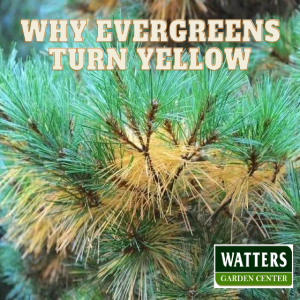
- Podcast Features
-
Monetization
-
Ads Marketplace
Join Ads Marketplace to earn through podcast sponsorships.
-
PodAds
Manage your ads with dynamic ad insertion capability.
-
Apple Podcasts Subscriptions Integration
Monetize with Apple Podcasts Subscriptions via Podbean.
-
Live Streaming
Earn rewards and recurring income from Fan Club membership.
-
Ads Marketplace
- Podbean App
-
Help and Support
-
Help Center
Get the answers and support you need.
-
Podbean Academy
Resources and guides to launch, grow, and monetize podcast.
-
Podbean Blog
Stay updated with the latest podcasting tips and trends.
-
What’s New
Check out our newest and recently released features!
-
Podcasting Smarter
Podcast interviews, best practices, and helpful tips.
-
Help Center
-
Popular Topics
-
How to Start a Podcast
The step-by-step guide to start your own podcast.
-
How to Start a Live Podcast
Create the best live podcast and engage your audience.
-
How to Monetize a Podcast
Tips on making the decision to monetize your podcast.
-
How to Promote Your Podcast
The best ways to get more eyes and ears on your podcast.
-
Podcast Advertising 101
Everything you need to know about podcast advertising.
-
Mobile Podcast Recording Guide
The ultimate guide to recording a podcast on your phone.
-
How to Use Group Recording
Steps to set up and use group recording in the Podbean app.
-
How to Start a Podcast
-
Podcasting
- Podcast Features
-
Monetization
-
Ads Marketplace
Join Ads Marketplace to earn through podcast sponsorships.
-
PodAds
Manage your ads with dynamic ad insertion capability.
-
Apple Podcasts Subscriptions Integration
Monetize with Apple Podcasts Subscriptions via Podbean.
-
Live Streaming
Earn rewards and recurring income from Fan Club membership.
-
Ads Marketplace
- Podbean App
- Advertisers
- Enterprise
- Pricing
-
Resources
-
Help and Support
-
Help Center
Get the answers and support you need.
-
Podbean Academy
Resources and guides to launch, grow, and monetize podcast.
-
Podbean Blog
Stay updated with the latest podcasting tips and trends.
-
What’s New
Check out our newest and recently released features!
-
Podcasting Smarter
Podcast interviews, best practices, and helpful tips.
-
Help Center
-
Popular Topics
-
How to Start a Podcast
The step-by-step guide to start your own podcast.
-
How to Start a Live Podcast
Create the best live podcast and engage your audience.
-
How to Monetize a Podcast
Tips on making the decision to monetize your podcast.
-
How to Promote Your Podcast
The best ways to get more eyes and ears on your podcast.
-
Podcast Advertising 101
Everything you need to know about podcast advertising.
-
Mobile Podcast Recording Guide
The ultimate guide to recording a podcast on your phone.
-
How to Use Group Recording
Steps to set up and use group recording in the Podbean app.
-
How to Start a Podcast
-
Help and Support
- Discover

Mountain Gardener with Ken & Lisa
Leisure:Home & Garden

Evergreens are a beautiful addition to any landscape, but sometimes they can turn yellow. There are a few different reasons why this can happen, but the most common ones are:
- Natural needle drop. All evergreens shed their needles eventually, even though it's not as noticeable as deciduous trees. Conifers (pine, spruce, fir, or juniper) typically shed their inner needles first, which can make them look yellow.
- Environmental stress. Evergreens can be susceptible to stress from a variety of environmental factors, such as drought, heat, cold, salt, and wind. When evergreens are stressed, they can turn yellow as a way to conserve energy.
- Nutrient deficiencies. Evergreens need a variety of nutrients to stay healthy, and a deficiency in any one nutrient can cause the needles to turn yellow. Nitrogen is a particularly important nutrient for evergreens, so if your soil is low in nitrogen, your evergreens may turn yellow.
- Pests and diseases. Evergreens can be susceptible to a variety of pests and diseases, some of which can cause the needles to turn yellow. If you notice any pests or diseases on your evergreens, it's important to treat them promptly to prevent further damage.
Here are a few tips:
- Water your evergreens regularly, especially during hot, dry weather.
- Mulch around your evergreens to help retain moisture and protect the roots from the heat and cold.
- Fertilize your evergreens 4 times a year with a fertilizer such as our 7-4-4 All Purpose Plant Food.
- Inspect your evergreens regularly for pests and diseases. If you find any pests or diseases, treat them promptly. We recommend a Tree & Shrub Systemic Insect Drench. One application lasts all year.
If you're not sure why your evergreens are turning yellow, or if you're not sure how to fix the problem, bring a sample branch in a baggie along with a photo of the tree into the Garden Center and we will assist you in diagnosing the problem.
#wattersgardencenter, #watterscardencenteraz, #mountaingardenerpodcast, #Top10Gardener,
#evergreens
More Episodes
 2024-12-04
2024-12-04
 2024-12-03
2024-12-03
 2024-12-02
2024-12-02
 2024-11-29
2024-11-29
 2024-11-25
2024-11-25
 2024-11-21
2024-11-21
 2024-11-16
2024-11-16
 2024-11-14
2024-11-14
Create your
podcast in
minutes
- Full-featured podcast site
- Unlimited storage and bandwidth
- Comprehensive podcast stats
- Distribute to Apple Podcasts, Spotify, and more
- Make money with your podcast
It is Free
- Privacy Policy
- Cookie Policy
- Terms of Use
- Consent Preferences
- Copyright © 2015-2025 Podbean.com



